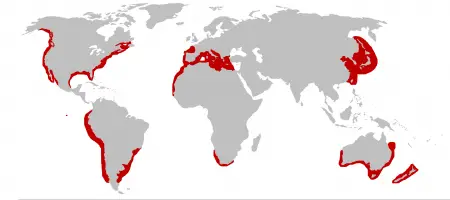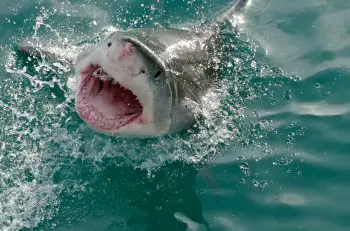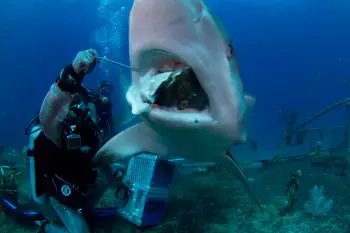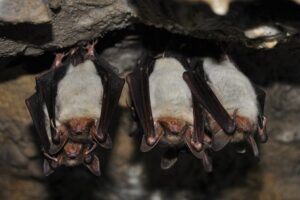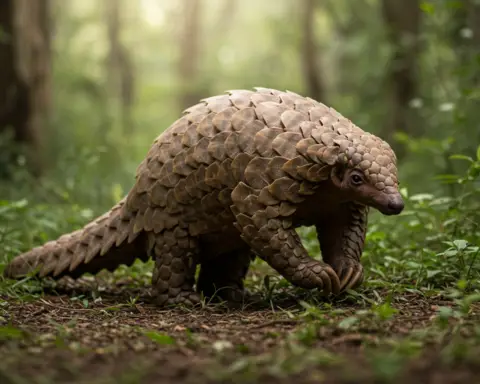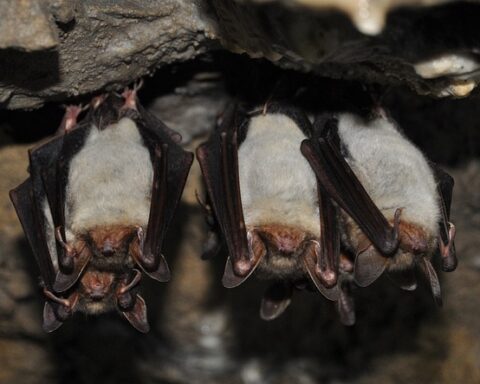Do you want to know how do great white sharks hunt their prey? Indeed, one of the most spectacular scenes for any biologist would be to capture the foraging behavior of great whites. The hunting behavior of these sharks is so fascinating to watch that it gives a lot of clues about its feeding.
How do Great White Sharks Hunt their Prey?
The great white feeds on many different animals like sea lions, sea otters, penguins, sea turtles, squid and even other sharks and rays. But perhaps the most effective method to study its hunting technique is to observe this huge predator when it attacks the seals.
Normally, the white shark preys on surface-swimming seals. Such predatory assaults are witnessed off the coast of South Africa in False Bay where this species readily feed on Cape Fur Seals. Because of the presence of huge number of seals, this 800-metre-long granite rock is rightly called Seal Island.
Around 64,000 Cape Fur seals live on this island along with other creatures like seabirds, penguins etc. Now let’s learn about how do great white sharks hunt seals and get an insight about its different strategies!
How Do Great White Sharks Hunt Seals?
As it seeks out its prey, the white shark zips to the surface. Next, with a sudden vertical rush and a fascinating acrobatic prowess, it hurls into the air (either completely or partially) clamping the seal along the way. The momentum behind the shark is so high that sometimes it leaps the shark fully into the air. However, the hunt is not always successful. This kind of attack is known as Polaris Attack and this behavior of rushing to the surface is called breaching behavior.
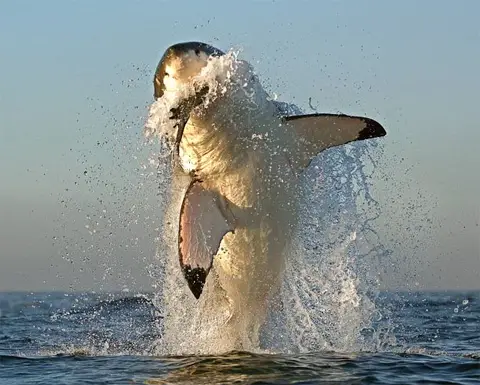 If the shark misses out in its breach, the seal gets away with it. But if it successfully catches its prey and clamps it in its jaws, it inflicts the animal with a ‘Killing Bite’ and shakes the seal’s head ferociously from side-to-side. As a result of this ‘Lateral Head-Shake’, the seal gets neck trauma and often dies instantly because of neck rupture. If this violent shaking doesn’t completely kill its prey, the shark employs quick lateral roll (Side Roll) to finish it off. However, if a seal still gets a narrow escape, the slashing wounds by the shark’s teeth cause severe injury to its posterior abdomen.
If the shark misses out in its breach, the seal gets away with it. But if it successfully catches its prey and clamps it in its jaws, it inflicts the animal with a ‘Killing Bite’ and shakes the seal’s head ferociously from side-to-side. As a result of this ‘Lateral Head-Shake’, the seal gets neck trauma and often dies instantly because of neck rupture. If this violent shaking doesn’t completely kill its prey, the shark employs quick lateral roll (Side Roll) to finish it off. However, if a seal still gets a narrow escape, the slashing wounds by the shark’s teeth cause severe injury to its posterior abdomen.
If the first strike fails, the white shark has a shot again. But this time, it’s horizontal breach. By means of its jaws, the shark forces the seal inside the shallow water and cause severe injury mostly on the posterior part of the animal. This second attack on the water surface is known as Surface Broach.
Cape Fur seals are agile, strong and large predators and certainly not easy to catch even for a predatory animal like great white. The seals do not throw in the towel quite easily and continue to fight back with their powerful claws. Therefore the great white has to clamp its prey on its first strike because if it fails, it is less likely that it may grab the seal again as a result of the seal’s agility.
When the seal is quick enough to evade the shark by moving in a zig-zag fashion, the shark changes its strategy. This behavior of seal – working a shark – often causes the shark to snap the seal’s head, in what is termed as the Lateral Snap. In this breach, the shark clamps the animal in mid-body.
While stalking its prey, the white shark camouflages itself against dark rocky bottom behind it. This way it makes the most of the murky waters close to the surface and successfully hunts its victim without being noticed.
The scientists believe that in such dark bottom, there is no chance of spotting the approaching predator below a depth of 2.5 metres while the shark hunts from below 6 metres. Another interesting thing about white shark’s breach was that 84 percent of the attacks were aimed for young seals. Also, these seals tend to be lethargic on their move primarily because they came back to the island after having their meal.
In making a dash, the white shark counts on its great speed and camouflages itself perfectly with the dark surroundings. Along with these, it attacks the seals with terrifying stealth. But perhaps the most intriguing ploy employed by these sharks is the breaching technique, in which it ambushes the seals and takes them by surprise. It is also observed that these sharks tend to pick off seals from those areas of the Island where Cape Fur seals are huddled together in large numbers. Thus, the white sharks form sort of a circle around the island in what is termed as the ‘Ring of Death’.
Off the shoreline of South Australia, a biologist named Charlie Huveneers along with his team of researchers, used tuna as a bait by attaching it on a fishing line. After the test, they came up with some of the most intriguing results. What they found out was that white sharks tend to operate differently during hazy days while on clear sunlit days, they operate in another way. But the most interesting thing was that the shark utilizes the sun in a very clever way so that the sun always stays behind it whenever it stalks its prey.
Typically, they attack at dawn and at dusk when the sun is at the low position. However there is a pattern to be noted i.e. the sun is always behind the shark during the hunt. Therefore at dawn (normally within 2 hours from the first light), it was noted that the white shark attacked tuna from the east (sun is rising behind the predator) while at dusk, it attacked from the west (once more the sun is setting behind the predator).
The predatory assaults in dim light at the crack of dawn have been very effective for the sharks. It is observed that the success rate of catching its prey in this low light is 55 percent as opposed to 40 percent when the sun is overhead.
That’s why the great whites typically do not hunt during the rest of the day in that the sunlight makes a way into the water surface and illuminates the approaching shark underneath it. Another unique fact about this strategy is that never before had any nonhuman animal been observed to make use of the sun as an effective means of feeding. During foggy days, however, it did not follow any specific pattern but stalked the tuna fish from everywhere.
There may be good reasons why this species follow this predation strategy (strategy to keep the sun behind). As maintained by the research team, it allows the shark to spot its prey with ease because the eyes of the shark are not affected if the sun stays behind and not ahead of it; that it lights up the specific portion of the prey and the shark can easily detect it; that the shark is camouflaged behind the sunlight because if it approaches from the sun’s direction, the reflection of the sun’s rays as they bounce off glitters the surface of water, making it almost impossible for the surface-swimming seals to spot the underwater shark coming toward them.
How do Great White Sharks attack their prey – Summary of Strategies
- After gathering data about shark hunting techniques, the biologists reach to a conclusion that:
- They tend to pick off those seals that swim on the surface. They ambush the prey and rely on speed and camouflage to grab them.
- In general, they tend to go after the juvenile seals perhaps because they become easy prey
- They tend to stalk small group of seals (like two to six individuals), as opposed to the bigger ones.
- They go after the seals that are well-fed and sluggish on their move. This is because these seals are coming back to the island and therefore, not as agile as others.
- Most of the predatory assaults are aimed at offshore Cape Fur seals perhaps because the seal may not be able to flee
- The great white’s first strike is such that it gives the seals no chance to swim. As soon as the seals reach the surface, the predator cruises from behind.
- They tend to ambush their prey by means of stealth, speed and with a vertical rush, grab the seals leaving no chance for them to escape.
- If the seal survives the first strike and moves in a zig-zag fashion, the shark bites off its prey by means of ‘lateral snap’.
How do Great White Sharks Hunt? – Video
Sources:
Martin, R. Aidan. “White Shark Predatory Behavior at Seal Island”. ReefQuest Centre for Shark Research.
Martin, R. Aidan and Anne Martin. “Sociable Killers”. Natural History.
Soniak, Matt. “Great White Sharks Hunt with Help from the Sun”. Mental Floss.

